Eventi
PRO/AH/EDR> E. coli EHEC – Danimarca: O157, sorgente di infezione non identificata, decesso
E. COLI EHEC - DENMARK: O157, UNKNOWN SOURCE, FATAL
***************************************************
A ProMED-mail post http://www.promedmail.org
ProMED-mail is a program of the International Society for Infectious Diseases http://www.isid.org
Date: Tue 11 Jan 2022
Source: Food Safety News [abridged, edited]
https://www.foodsafetynews.com/2022/01/deadly-e-coli-o157-outbreak-sickens-13-in-denmark/
Officials in Denmark are investigating a deadly outbreak of Shiga toxin-producing _E. coli_ (STEC or enterohemorrhagic _E coli_ EHEC) O157 that has affected more than a dozen people. The outbreak began in December 2021 and includes 13 patients with a possible common source of infection, said the Statens Serum Institut (SSI). Nine people have been hospitalized, and an elderly patient has died.
Since early December [2021], 13 patients have been detected, and samples from 9 of those sick are closely related after an analysis by whole-genome sequencing at the Statens Serum Institut. This means they were likely infected by a common source.
Among the sick are 3 children that have developed hemolytic uremic syndrome (HUS), a potentially fatal complication of EHEC infection. Four men and 9 women between the ages of 2 and 90 with a median age of 41 are ill. They live in all parts of the country, except the Nordjylland region. Sick people have not been traveling or attended joint events in the time leading up to their illness. The 1st confirmed infection was recorded on 3 Dec 2021, and the latest possible case was reported on 4 Jan 2022.
"It is a serious outbreak, as this type of Shiga toxin-producing _E. coli_ can, in some cases, cause acute renal failure. We are paying particular attention as 3 children with acute renal failure were reported here in December [2021]. Patients with severe diarrhea, especially bloody diarrhea, should seek medical attention to get a correct diagnosis," said Luise Muller, an epidemiologist from SSI. "As we do not yet know the source of this outbreak, the best advice we can give is remember to cook ground (minced) meat and rinse fruit and vegetables thoroughly before eating. It is also important to separate raw meat from ready-to-eat food, such as salad, which is not heat-treated before eating."
Officials with SSI, the Danish Veterinary and Food Administration (Fodevarestyrelsen) and DTU Food Institute are trying to find the source of the infections. Interviews are ongoing with patients or their relatives to get information on consumed food, animal contact, and other possible exposures. Danish officials have informed the European Centre for Disease Prevention and Control (ECDC) and other countries via the EpiPulse network to see if related infections have been reported elsewhere.
[Byline: Joe Whitworth]
--
Communicated by:
ProMED
[The source of this continued outbreak is not clear. Three children developed hemolytic uremic syndrome [HUS], which tends to develop more in children than adults with EHEC (also called STEC). The following is a good basic review on HUS:
Citation: Joseph A, Cointe A, Kurkdjian PM, et al. Shiga Toxin-Associated Hemolytic Uremic Syndrome: A Narrative Review. Toxins. 2020; 12(2): 67; https://doi.org/10.3390/toxins12020067.
Abstract
---------
"The severity of human infection by one of the many Shiga toxin-producing _Escherichia coli_ (STEC) is determined by a number of factors: the bacterial genome, the capacity of human societies to prevent foodborne epidemics, the medical condition of infected patients (in particular their hydration status, often compromised by severe diarrhea), and by our capacity to devise new therapeutic approaches, most specifically to combat the bacterial virulence factors, as opposed to our current strategies that essentially aim to palliate organ deficiencies. The last major outbreak in 2011 in Germany, which killed more than 50 people in Europe, was evidence that an effective treatment was still lacking. Herein, we review the current knowledge of STEC virulence, how societies organize the prevention of human disease, and how physicians treat (and, hopefully, will treat) its potentially fatal complications. In particular, we focus on STEC-induced hemolytic and uremic syndrome (HUS), where the intrusion of toxins inside endothelial cells results in massive cell death, activation of the coagulation within capillaries, and eventually organ failure." - Mod.LL
ProMED map:
Denmark: https://promedmail.org/promed-post?place=8700827,111]
Vocabolario EU-RL-VTEC
Focus on
